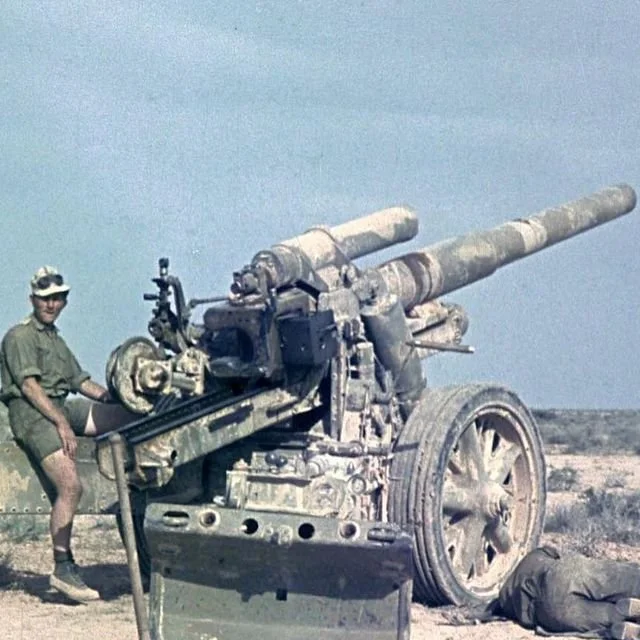Deutsches Afrika Korps (DAK):
Oberleutnant, DAK. 200 Infantry Regiment:
The Infantry Regiment 200 was composed of two battalions. The III./225 IR and the III./347 IR arrived in Africa on the 7th of May 1941. The Regiment was a part of the 5. Leichte Division until it became the 90. The Leichten Afrika Division was created in August 1941 and called their Division z.b. V Afrika.
The Abbreviation z.b.V stands for “zur besonderen Verwendung”, which translates as “for a special use” in English.Through its 5-year existence, it was redesignated several times, though always known colloquially as the “Africa Division”. This is because it was the only German Division to have been in Africa itself. I fought throughout the North African Campaign, finally surrendering to the Allies in Tunisia in May 1943.
As with other units assigned to the “Afrika Korps,” units were quickly raised from available troops stationed in Western Europe. As such, the Afrika Division was reconstituted as the 90th Panzergrenadier Division in Sardinia (Shown as the unit tactical sign (the island outland in red, with a sword in the center), during July 1943, evacuated from Corsica with the Sturmbrigade Reichsführer-SS to the Italian Mainland in October 1943.
The Division appeared opposite both the American and the British Forces as they pushed North. It was then very nearly wiped out in bitter fighting with the Canadian 1st Infantry Division near the Moro River in late November 1943. A short time late it was withdrawn into reserve at Frosinone and redesignated 90th Grenadier Division (Motorized).
While still rebuilding, it was called on for immediate deployment, albeit piecemeal along the front in response to the “Spring Offensive” in 1944 to serve as a rearguard while the balance of the German units in Southern Italy fell back to the “Winter Line”. Shifted southeast from the Franco-Italian border in September 1944, the 90th Grenadier was finally listed as destroyed in the fighting south of Bologna. The remainder of its personnel surrendered to the Brazilian Expeditionary Force (FEB) in Italy in April 1945.
Feldwebel, Infanterie Regiment (mot) 155, 90.leicht Afrika-Division:
Arriving in October 1941, IR (mot) 155 became part of the first German forces in Africa. They were known as Division z.b. V. Afrika, began to train in the Bardia area and was earmarked by Rommel to lead the attack on Tobruk. In late November, it was renamed 90. leichte Afrika-Division. Following Tobruk, the division fought east across northern Africa, taking part in the battles at Bir Hakeim and both the battles at El Alamein.
By the spring of 1943, the division had conducted a fighting withdrawal back to Tunisia, where it surrendered. Reconstituted and renamed the 90. Panzergrenadier Division was to defend Sardinia, but was then transferred to Corsica and placed under Luftwaffe command before being shipped to the south of Italy, where it would fight until the end of the war. The Feldwebel wears the early textbook Tropenanzug für das Deutsche Heer or tropical Army uniform with Afrikakorps Ärmelstreifen and bronze tress on the collar and Schulterklappen.
“NEW & Upgraded” Feldwebel, 164. Leichte, Afrika-Division:
Established in November 1939 at the Königsbrück Truppenübungsplätze or military training area in Wehrkreis IV, the division was held in a reserve role during the Battle of France. In 1941, it took part in the Greek Campaign and was then stationed in the Salonika area as an occupation force.
Confronted with the growing partisan attacks, troops from the division executed over 200 men in a retaliatory action. Shortly after this, the division moved to Yugoslavia and then to Crete. Hitler compared Kreta to the Channel Islands and felt the British would fight to recapture it.
He ordered it to be heavily fortified. In January 1942, the division was renamed and reorganized as Festung Division Kreta. By July, the need for more troops at the El Alamein front was critical. The majority of the unit was shipped to Africa, where it was redesignated as 164. leichte / Afrika-Division in August 1942.
Following the British offensive at El Alamein, the division conducted a fighting retreat, surrendering in May 1943. The issue of the Tropenanzug für das Deutsche Heer or tropical Army uniform, occurred in Kreta. The Feldwebel added standard collar tress, from an old Bluse or company supply. He has added a set of NCO-tressed Infantry piped HBT Schulterklappen. Not being part of the Afrikakorps troops in Kreta, his uniform had no Korps Ärmelstriefen.
*Unteroffizier, (Motorized Infnantry) Schurtzen Regiment 115.
Originally, the 115th was part of the Infantry Division 33 garrisoned in Kaiserslautern. Fighting in France in 1940, the Regiment was then part of a reorganization that changed the Infantry Division into a Panzer Division 15 and was sent as part of the division's ‘Afrika’ in the spring of 1941.
The regiment took part in the unsuccessful attacks on Tobruk in April and May 1941, suffering heavy losses, and was finally part of the actions that secured Benghazi, in the Gazala Line, Bir Hacheim, and Tobruk. The 115th took heavy losses in the battle of El Alamein, then again in the fighting, and the retreat at Alam Halfa in 1942 as the Afrikakorps fought for Libya.
1943 found the regiment in Tunisia battling itself to extinction at Medenine, Wadi Zigaou, and El Hauma. What was left surrendered and headed for POW camps in the USA? While the Band played for hours when they arrived, there was not so much fanfare when they came home.
The uniform carries no collar-insignia, and the boards are from a continental, uniform as if the uniform was quickly put together, The trooper has passed the Paratrooper Qualification School, and wears his ‘Heer Fallschirmjager’ badge on this tunic alongside the Black Wound Badge, and the Infantry Assault Badge likely won in prior battles in France or the Low Countries.
He has been put in command several times, as it goes in war, and the officers are taken out, lower-ranked troops step up to the plate and lead, the Iron Crosses Classes I and II are both displayed here. He wears a mix of gear, canvas Y-straps, brown leather ammo pouches, tropical trousers, and low ankle boots.
*I need some seriously better pictures and an update on this uniform.
Haumptmann, Schutzen Regiment /115:
The 115th was just a part of the German Forces in Africa, having only been sent to save the Facist-Italian Forces, which had gotten beat up, and about to lose the conflict, The Germans came to ‘Save the day’ but soon ran into the British Forces built up of troops from all the UK had to offer. The Germans had a smart and tactical leader in Rommel, and after a slow start, a new general for the British, Montgomery, under his control, would change the tide of the war in Africa.
This Hauptmann wears the standard uniform for a member of the Deutsche Afrika Korps. He has replaced the standard collar insignia and shoulder insignia with those from his feldgrau uniform, with the early yellow/green piping of the Schurtzen Regiments. Like many Schurtzen units, the 115th was resurrected in Italy as a Panzergrenadier unit.
The uniform retains the standard tropical eagle and DAK cuff title, which was worn on the jacket in Africa. The Hauptmann wears the Wound Badge in Silver, which opens the door for him to have taken the uniform back with him to Italy as a medical evacuee, and he’ll have to replace the cuff title with the post/duty type.
He was awarded the Infantry Assault Badge in Bronze, which was given to those fighting in the motorized infantry units who had engaged in at least three combat actions. He’s demonstrated his combat leadership by earning both I and II Class Iron Crosses. He has also been awarded the War Merit Cross and the West Wall medal, probably from his early service in France, or before the conflict, while garrisoned in Kaiserslautern.
With this uniform, he wears either breeches or shorts with tall lace-up boots cut down to the ankle. As an officer, he may well wear the rare officer tropical belt or the double claw leather belt, topped off with the Tropical M41 cap, I just threw in the cheesy pith helmet, as it never made it into a photo-shoot and heeded a home.
Upgraded! Feldwebel, 361st Infantrie-Regiment (DAK):
The 361. Infantrie-Regiment was part of the Leicht-Infantrie-Division, which was created in August 1941 as division z.b.V. Afrika, from units already in Africa under the control of Division-Kommando z.b.V. Afrika. The abbreviation z.b.V. “zur besonderen Cerwendung” (for special use). The official name of the division changed or morphed through several names, but throughout the 5 years, they were known as the “Afrika Division”. It is the only German combat division to have been raised in Africa. They ceased to exist after surrendering to the Allies in Tunisia in May 1943.
This Feldwebel wears the early Tropenbluse with specific tropical insignia and trees. On the Right sleeve is the Afrika Korps Cufftitle, worn by all Heer (Army) soldiers serving in Africa. This is not the same as the Afrika “Campaign” Title is silver & white over tan, which was worn in the same place by all who had served (and made it home) in the campaign, issued after 1943.
Worn with Tropical trousers or Breeches, with either short or tall tropical boots, he would have likely had the Tropenfeldmutz or a ‘Repainted over the Apple Green, Sand color Stahalam (Helmet), Tropical shirt underneath, often with a tie. The DAK issued web gear of khaki color canvas or red-brown leather, his buckle was generally repainted like the helmet to sand color.
The Brown tunic uniforms were issued the pith helmet, which was nice and light, and provided good shade, but were still unpopular, perhaps because they were similar to the British Tropical Sun Helmets. I have added one of the variations of the German Steel Helmet here, and certainly would fit in here as well. The tunic is a darker brown than the norm, which was an olive-type green but lighter in color, but would fade out fairly quickly, then, in the 100-degree days and chilling nights.
He has earned both Eisernes Kreuz I & II displayed on the tunic, along with the Infantry Sturm Abzeichen. They could have been earned in North Africa, Libya, France, or Poland.
Hauptmann, 104 Infantry Regiment, 21 Panzer Division, Waffenrock:
A survivor of the Afrika Campaign, when air-lifted from Tunisia before the surrender there in 1943, he had been involved in the long, continuous battle in North Africa from May 1941 till May 1943. Originally part of the 15th Panzer Division, formed in Kaiserslautern the division fought in France, then they shipped out to Africa, where the 104th became part of the 21st Panzer Division, fighting across Egypt then falling back to El Alamei,n fighting the final battle against the Americans at Kasserine then surrendering in Tunisia.
This Dress uniform is as it was after hospital recovery in Germany in 1943, it is ready for a presentation or some military event, but parades were becoming pretty rare by this point in the war, showing prewar Austrian Occupation, West Wall Medals, French and African Combat Decorations, as long as the ‘Heer’ Long Service Award with the 12 years Eagle on it. The Afrika Campaign Cuff Title and the Italian / German Afrika medal complement the Wound Badge.
The uniform is worn with matching trousers, Schirmmutz, and footwear with a belt. A Dagger could be suspended from an inner hanger.
“Updated” Oberstleutnant, Panzer Regiment 5, Deutches Afrika Korps:
The 5th Panzer Rgt. Began to arrive in Libya in Feb. 1941 as part of a light panzer division that became the Afrikakorps. Taken from the 3rd Panzer Division most of the members were Berliners or Prussians from Brandenburg and Western Silesia. Shipping out across the Mediterranean Sea in their black wool uniforms, they were issued the new tropical uniform in Africa. The uniform was not produced in "officer" quality, and so this officer has transferred continental officer grade insignia and his awards to his new tropical uniform.
An interesting feature in the Afrika Theatre was the placing of both the collar insignia from the standard officer tunic and the skulls from the black panzer uniform on the same jacket. Part of the early armor experiments of the new German army, this officer is a veteran of the Spanish Civil War. With the start of combat in 1939, this officer has been in the thick of battle, and he has been awarded the Iron Cross I & II Class & Black Wound Badge. Panzer Assault Badge.
Issue shorts and officer grade tropical cap complement the standard tropical shirt. But the uniform was typical of the tropical issue-4-pocket “Olive” jacket used by the German Army or “Heer/Wehrmacht”, with a browner colored Tropical Cap, with the officer's silver braid applied to it. It has Tan Corduroy Breaches, though in the picture shoot, at the time we chose Luftwaffe tropical breaches, which were a possibility. The uniform has an Iron Cross II Class ribbon in the preferred buttonhole arrangement, as well as the I Class Badge hanging on his left pocket. He has the Tanker Assault Badge, with its Condor-Legion equivalent next to it for service in Spain.
The uniform for a couple of photo shoots the uniform carried an ID-Light on it, if you flipped out the red or green lenses, it became a flashlight or torch. I just threw in the cheesy pith helmet, as it never made it into a photo-shoot and heeded a home.
“Updated” Oberleutnant, Rudi Herbest, Division Stab, 15th Panzer Division “DAK”:
Herbst served with Panzer Group Thoma, also known as Group “Imker” from March 1938 until disbanding in May 1939. he was one of the last junior officers in the command. “Imker” was the ground contingent of the German Condor Legion in Spain and was commanded virtually throughout the conflict by Oberst Wilheim Ritter von Thoma.
Arriving in Spain in early October 1936, the personnel of Group “Imker” were originally made up of volunteers from the 6th Panzer Regiment of the 3rd Panzer Division. Tasked with the training of General Francisco Franco’s Spanish Nationalist officers and men in tanks, infantry tactics, artillery, and signals employment, Group “Imker” maintained two, then three panzer training companies equipped with the Panzer 1 light tanks as part of Group “Drohne”.
After completion of their training, the Spanish took custody of their tanks, at which time a new shipment of Pz.kfw 1 tanks arrived from Germany. Additionally, Group “Drohne” made use of a large number of Russian Built light tanks that had been captured by the Republican Forces.
While ostensibly in Spain in a training capacity, the German Army instructors rotated to the front to provide further technical advice to the Spanish and to engage in direct combat operations against the enemy. After the war, Ritter von Thoma claimed to have personally taken part in 192 tank actions in Spain. For his service, Herbest was one of over 400 to receive the Panzertruppenabzeichen das Legion Condor and the Spanienkreuz mit Schwerten in Bronze.
Herbest’s assignment from 3. Panzer to 15. Panzer is not clear. His service is recorded with his awards of both Eiserne Kreuz I u. II Klasse as well as the Panzerkampfabzeichen in Silber. The division arrived in Tripoli as part of Operation Sonnenblume in April 1941. Herbert was an officer in the 3. Kompanie of Division 8. Panzer Regiment. The divisional numbers on the shoulder boards point to a transfer at some point to the Divisional Stab (Command). With the surrender of all Axis Forces on May 12, 1943, Herbert went into captivity, arriving in the U.S. early in July. Arriving in the U.S., the DAK soldiers were issued POW clothing. His Tropical Bluse, Feldmutz, and Steilhosen, along with awards and documents still in his pocket, were either taken at that time or at some point later.
It is assumed that Herbest returned home after the war, but there is no record of this. The uniform depicts the use of a “Luftwaffe M40 colored Cap and an Enlisted troop at that, it was an option available for the picture shoot, and to show this style cap, but not necessarily the one for this man’s uniform, it did happen where officers wore EM caps. And I’d have to re-shoot the pictures, and lose these!
Note: Of interest in the first-period picture, the metal “Totenkopf” Death's Head / Panzer-Insignia is only on one lapel, not the other. His M40 tropical cap does have the silver officers’ braid around the top edge, though, as opposed to my uniform impression. The Pictures are of the tropical “Army Type” uniforms; the last picture shows the jacket still in use in Tunisia, I believe. The tankers have no DAK cuff titles.
Hauptmann, 999th leichte Panzerjäger, ‘Afrika’:
The 999. The leichte Afrika-Division was formed in Tunisia, early in 1943. The division was in basis, made on building up the 999. Afrika-Brigade. They had been made up by using a penal military unit. All members of Nazi penal units were "criminals" in the Army’s eyes, and a good proportion of the brigade had come to them for containment or, was perceived to be anti-Nazi, or considered troublemakers.
The division was still being put together and still needed several elements when North Africa started to collapse. And they began to fight, but it was in individual units, piecemeal, so to speak. In Tunisia, they operated as independent battalions, then companies, suffering high losses, and many were captured. They had gone up against the Americans for the most part and then reportedly surrendered without a fight.
Those that did not surrender there, reformed, were sent to fight in Greece, where they were to conduct "Bandenbekämpfung" or anti-partisan campaigns.
During the deployment to Greece, some refused to do the Nazi salute, and some others defected, and changed sides. Eventually, the rest surrendered.
The Hauptmann wears the standard-issue Heer-Tropical Uniform and with the typical use of Continental European insignia on it, the Officer Litzen and Shoulder-boards are piped in dark pink, his M40 Feldmutz has the piping on it as well. He wore trousers or shorts with a jacket, and tall tropical boots or shoes. He would have carried a sidearm on an officer’s leather-to-web belt. The officer may have been sent to the unit for the same reason but does not appear so as he is very decorated, he was probably strict, having the German Cross in gold, the Iron Crosses 1 and 2, Armor Assault Badge, the wound badge, and ribbons for long service, the Sudattenland, Italy, and service in the Condor Legon. The jacket has the common ‘Totenkopf’ Panzer skull on the lower lapels, as was the practice for armored units, leading me to think he would have been with a self-propelled gun unit rather than a towed field gun.
Upgraded! Feldwebel, 302. Heeres Flak Abteilung, 10.Panzer Division, Deutsches Afrika Korps ‘DAK’:
Assigned to 10. Panzer-Division as part of 90. Artillerie-Regiment 302. Heeres Flak Abteilung was rushed to North Africa to reinforce the Deutsche Afrika Korps’ western flank in Tunisia against the American landings in Algeria.
Here, they participated in the Battle of Kasserine Pass and several of the other early battles with units of the US Army, newly committed to the war. They also took part in the failed Axis offensive of Operation Ochsenkopf in late February 1943. When the Axis line collapsed in May 1943, the Abteilung, along with the division, was trapped. It surrendered to the US Army on 12 May.
Picked from a pile of discarded German military clothing as souvenirs by a soldier of the 1st Quartermaster Company of the 1st Infantry Division. Sent home, the tropical Bluse and Feldmütz were shown off by a younger brother in Kansas City and then eventually went into an attic trunk until sold to a military collector who placed an ad in the Kansas City Star.
The Bluse shows a mix of the standard Heer pattern unit numbers, the numerals 3 & 2 along with a set of prewar Weimar 0’s. Along with the Eiserne Kreuz I. Klasse, the Feldwebel earned the Heeres Flakabzeichen for actions against both British and US fighter-bombers that ruled the Afrikan sky by 1943.











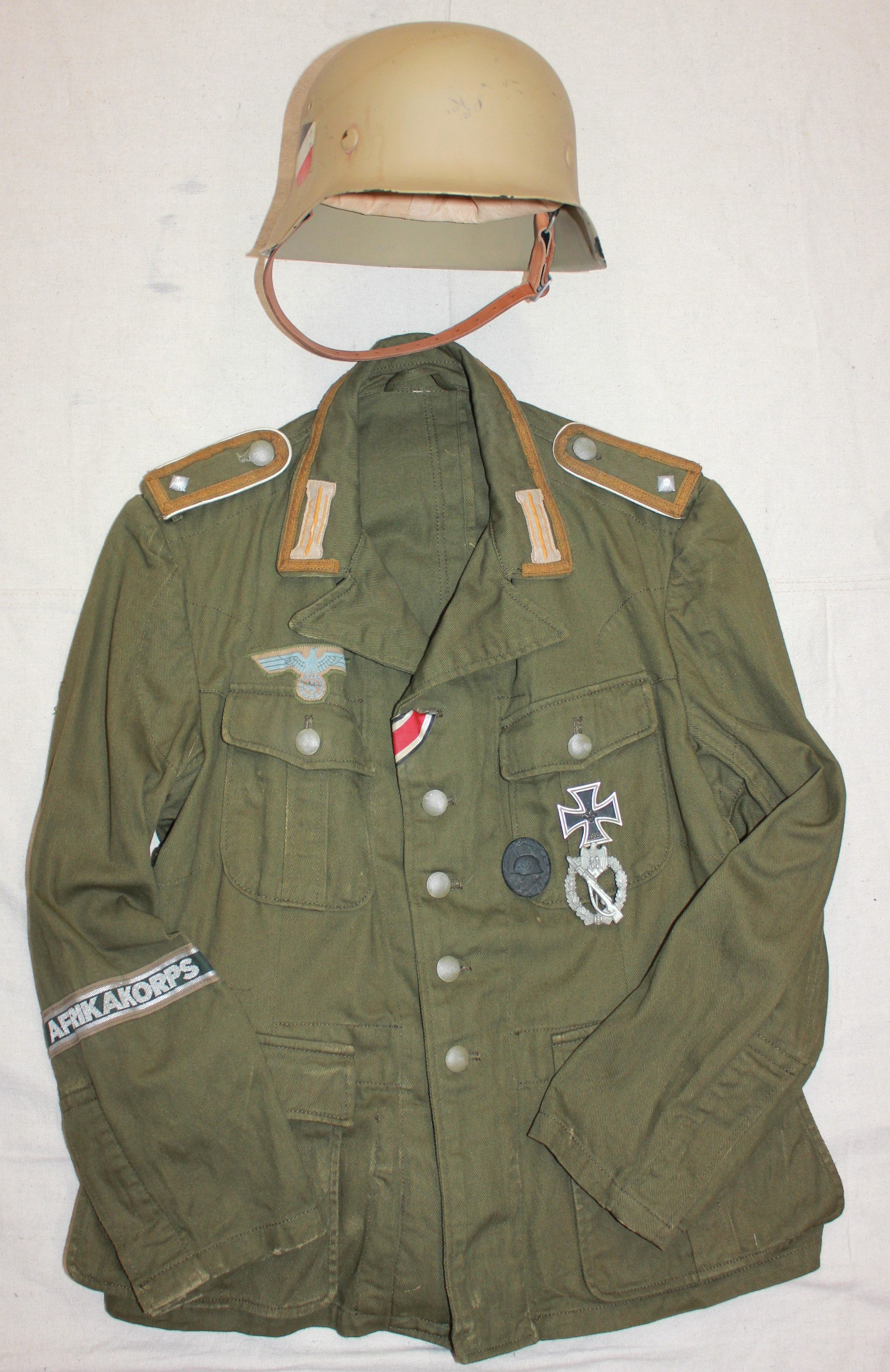


















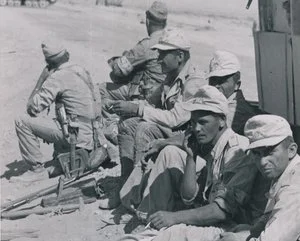























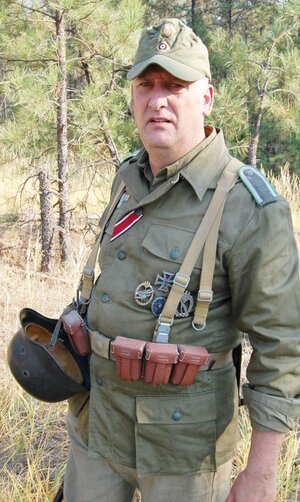













































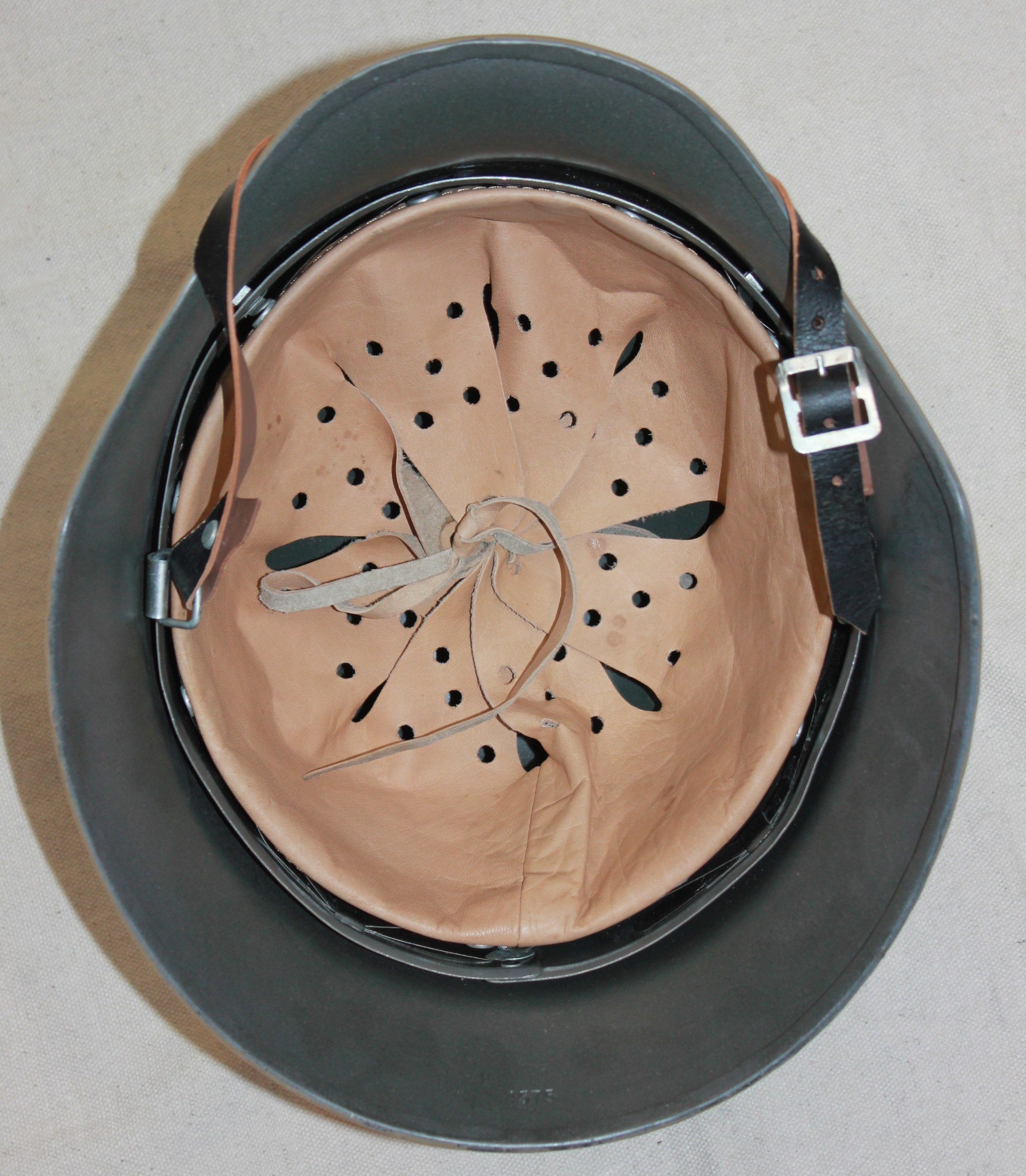





















































































![IMG_8484[1].JPG](https://images.squarespace-cdn.com/content/v1/61355b53c1baef12641a2de9/1754360393289-GU1DNJN7PLCS2GUIFZVY/IMG_8484%5B1%5D.JPG)


































